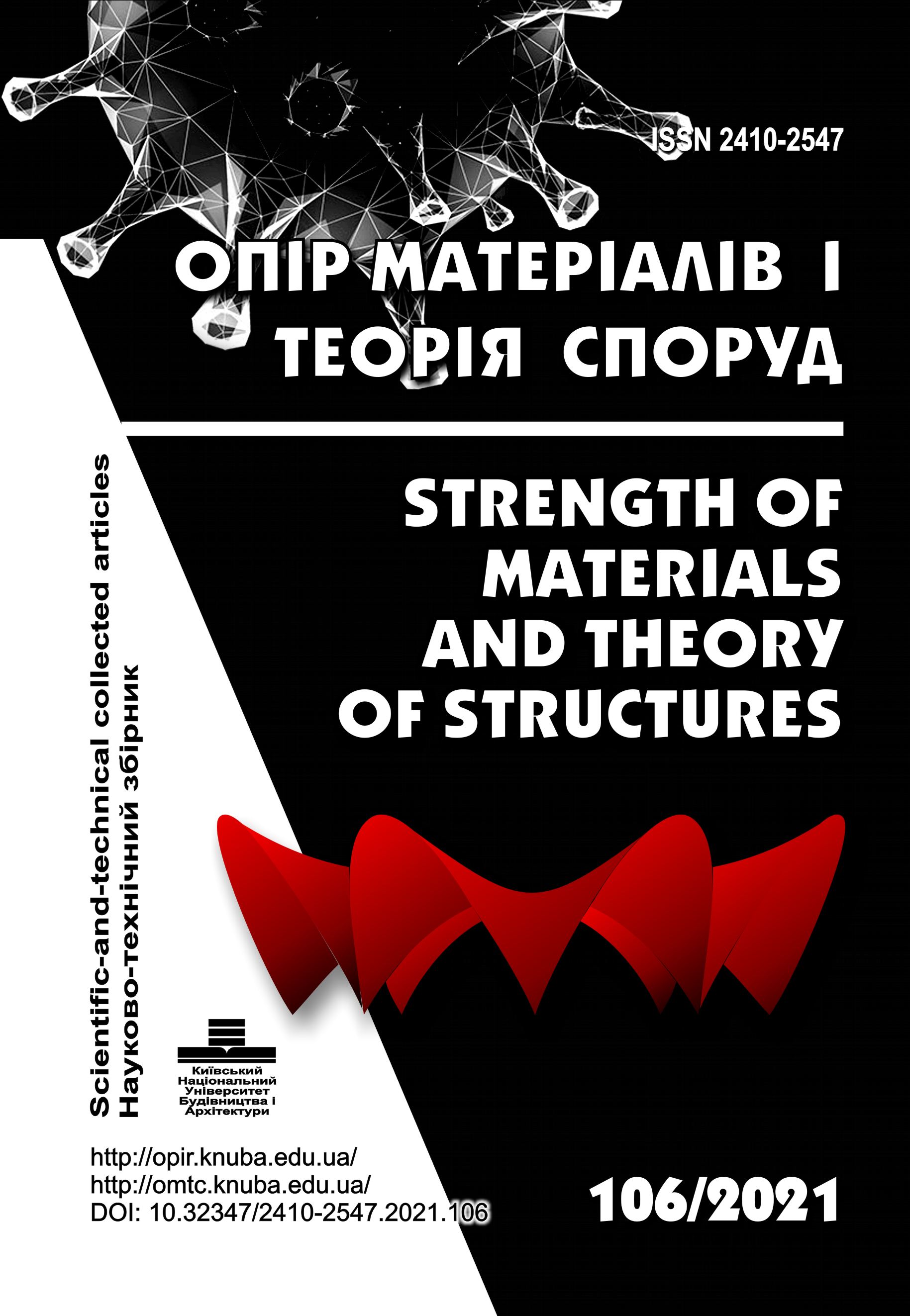Convergence of the finite element method and the semi-analytical finite element method for prismatic bodies with variable physical and geometric parameters
DOI:
https://doi.org/10.32347/2410-2547.2021.106.92-104Keywords:
finite element method, semi-analytical finite element method, finite element, stress-strain state, physical and geometric nonlinearity, elastic and elastic-plastic deformation, curvilinear prismatic bodiesAbstract
In this paper, a numerical study of the convergence of solutions obtained on the basis of the developed approach [1, 3, 4, 5] is carried out. A wide range of test problems for bodies with smoothly and abruptly varying physical and geometric characteristics in elastic and elastic-plastic formulation are considered. The approach developed within the framework of the semi-analytical method to study the stress-strain state of inhomogeneous curvilinear prismatic bodies, taking into account physical and geometric nonlinearity, requires substantiation of its effectiveness in relation to the traditional FEM and confirmation of the reliability of the results obtained on its basis.
The main indicators that allow comparing the SAFEM and FEM include the rate of convergence of solutions with an increase in the number of unknowns and the amount of charges associated with solving linear and nonlinear equations. For the considered class of problems, the convergence is determined by such factors as the nature of the change along Z3’ of the geometric and mechanical parameters of the object. The uneven distribution of mechanical characteristics is associated with the presence of the initial heterogeneity of the material, the development of plastic deformations, and the dependence of material properties on temperature. The same factors also affect the convergence of the iterative process, since the conditionality of the SAFEM matrix depends on them. In order to determine the area of effective application of the SAFEM, a wide range of test cases are considered.
In all cases, the semi-analytic finite element method is not inferior in approximation accuracy, and in some problems it is 1.5-2 times superior to the traditional method of scheduling elements. finite element method.
References
Bazhenov V.A. Napivanalitychnyi metod skinchenykh elementiv u pruzhnii ta pruzhno-plastychnii postanovtsi dlia kryvoliniinykh pryzmatychnykh obiektiv (Semi-analytical method of finished elements in elastic and elastic-plastic position for curviline prismatic objects) / V.A. Bazhenov, А.A. Shkril’, Yu.V. Maksimyuk, I.Yu. Martyniuk, О.V. Maksimyuk // Opir materialiv i teoriia sporud– 2020. – Vyp. 105. – S. 24–32.
Dluhach M.Y. Metod setok v smeshannoi ploskoi zadache teoryy upruhosty (Mesh method in mixed plane problem of elasticity theory)- Kyev: Nauk.dumka, 1964.- 259s.
Huliar O.I. Universalnyi pryzmatychnyi skinchenyi element zahalnoho typu dlia fizychno i heometrychno neliniinykh zadach deformuvannia pryzmatychnykh til (Universal prismatic finite element of general type for physically and geometrically nonlinear problems of deformation of prismatic bodies) / O.I. Huliar, Yu.V. Maksymiuk, A.A. Kozak, O.V. Maksymiuk // Budivelni konstruktsii teoriia i praktyka – 2020. – Vyp. 6. – S. 72–84.
Maksimyuk Yu.V. Osnovni spivvidnoshennia dlia fizychno i heometrychno neliniinykh zadach deformuvannia pryzmatychnykh til (Basic relations for physically and geometrically nonlinear problems of deformation of prismatic bodies) / Yu.V. Maksimyuk, S.O. Pyskunov, A.A. Shkril, O.V. Maksimyuk // Opir materialiv i teoriia sporud– 2020. – Vyp. 104. – S. 255–264.
Maksymiuk Yu.V. Alhorytm rozviazannia systemy liniinykh ta neliniinykh rivnian napivanalitychnym metodom skinchenykh elementiv dlia kryvoliniinykh neodnoridnykh pryzmatychnykh til (Algorithm for solving a system of linear and nonlinear equations by the semivanalytic finite element method for curvilinear inhomogeneous prismatic bodies) / Yu.V. Maksymiuk, M.V. Honcharenko, I.Iu. Martyniuk, O.V. Maksymiuk // Budivelni konstruktsii teoriia i praktyka – 2020. – Vyp. 7. – S. 101–108.
Peterson R. Koэffytsyentы kontsentratsyy napriazhenyi (Coefficients of stress concentration) – M.: Myr, 1977.-302s.
Downloads
Published
Issue
Section
License

This work is licensed under a Creative Commons Attribution 4.0 International License.
Authors retain copyright and grant the journal right of first publication with the work simultaneously licensed under a Creative Commons Attribution License that allows others to share the work with an acknowledgement of the work's authorship and initial publication in this journal.

